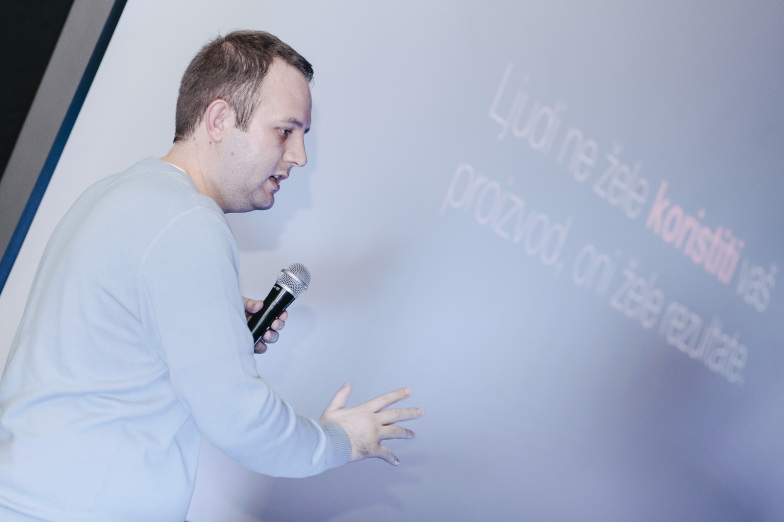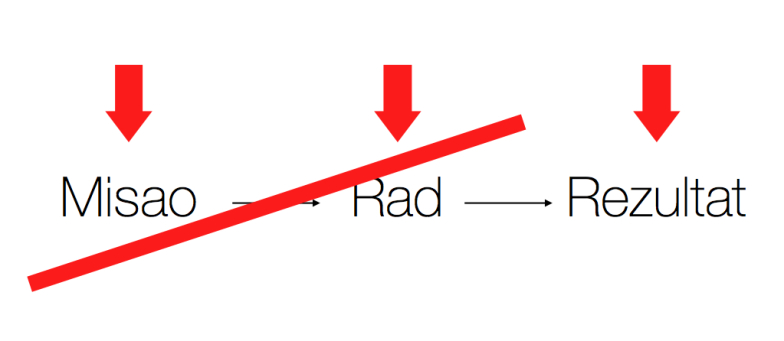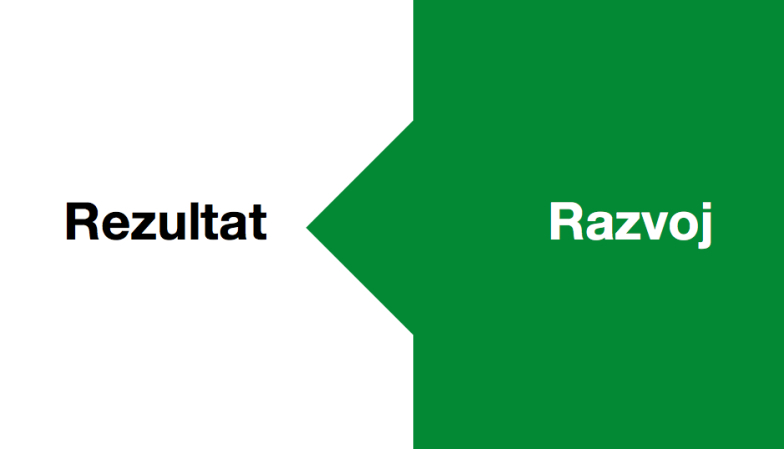Sometimes the solution to the problem is a smart tool, sometimes it’s a dumb tool which just helps us get the job done. But what’s next? Goran Peuc will explain you in the detail why no one wants to use your product.
Sometimes the solution to the problem is a smart tool, sometimes it’s a dumb tool which just helps us get the job done. But what’s next?
The good
A great example of such design is a knife. It is a great tool and we can use it to chop up our vegetables. But we don’t want to be chopping veggies, we just want them chopped up and ready for further processing.
Another example would be a kettle, we use it to boil water for our tea or coffee. But we don’t want to be boiling water, we just want to get our hot drink!

Both these tools are great and they help us get what we want, but they still require work from us. We just want the result!
The better
Enter Nest. This is a smart thermometer and thermostat device which learns you habits and works autonomously providing you comfort and money saving. No work, just the result. And almost completely seamless.
We all know (and have this love-hate relationship) Dropbox. When it first appeared on the market it didn’t offer anything previously impossible. People used FTP, rsync and similar tools to synchronize their files, it was manual labour, but it was doable for most people. Dropbox, however, changed the way user achieves the desired result. And it accomplished that by doing – nothing! You install Dropbox and it does all its work in the background, ensuring your files are available on your devices, which is what you wanted in the first place, not syncing and transferring files. Result, not an action leading to that result.
The less interaction with the tool – the better the experience. Users want to be presented with the results. Ideally, ones they are expecting and ones that are relevant to them.
Google+ gave their users a tool to organize their friends into circles. Not much people use those. Facebook gave their users already organized circles of friends, it didn’t require work from the user, you are presented with the result that you can use at your bidding.
Of course, such design is based on assumptions. Sometimes many assumptions can lead to small barely visible design decisions. For example, typing “0:45” in a YouTube comment will automatically link to that timestamp in that video. This is done automatically and without any additional effort from the user, it was based on an assumption that isn’t correct for all posted comments on YouTube, but it probably is for the vast majority, since such assumptions are usually backed by a hefty database.
The painful
Some of the most painful experiences online are buying something, especially the part when it comes to payment. Many times the UX is horrible and expects the user to make sure the credit card number is properly formatted etc. There are many examples online where this is happening, where the user is expected to do the work that can easily be offloaded to the computer. A simple example to prove the point, a drop-in plugin which enhances the credit card UX. (link http://jessepollak.github.io/card/) Right now, it’s not the technology that’s impeding people’s online shopping, it’s bad design!
The new
What we need is a new design principle.
A famous book “Don’t make me think” by Steve Krug touches on these principles, but if we eliminate the need for the user to think we still need them to do the work.

What we want is just the final result, without the thinking and without the working. This of course means designing new tools and processes. These tools and processes might get technologically or otherwise more complicated, but their UX must be minimal and if possible completely invisible.
For the user, it must appear, there is no tool!
This also requires us to rethink our design process. Going from thinking to doing to result is a lot of work and leaves many possibilities that can lead to a dead end. In order to simplify the process we must reverse the direction of the design process. Result first is what we need. By concentrating on our final goal we are aware of our bare essentials needed for the result.

It’s easy to get lost in product design, it’s easy to spend too much time designing something which isn’t even needed, that’s why it’s important to focus on the end result.
Less, but better because it concentrates on the essential aspects, and the products are not burdened with non-essentials. Back to purity, back to simplicity.
Dieter Rams
Of course this doesn’t mean dismissing your product completely and replacing it with a magical solutions that just delivers the result. If for no other reason that because of the fact that that is not possible (yet) in most cases.
We can however keep our eyes open for the smaller bits we decide to design. Some of them may not even be needed, and even such small details and UX simplifications are great, because they mean the users are spending LESS time using your product and get the RESULT faster, which is why they were here in the first place.
Conclusion
Today, we use things that were considered to be a sci-fi 10 years ago. It is fair to ask what will happen in another 10 years. Surely many tools and processes will be simplified from the users standpoint. This doesn’t mean less work for designers, or fewer tools to design, it just means reversing the process and delivering to the user exactly what it needs without the overhead of interacting with software or hardware.
By using this kind of thinking it’s easy to imagine the future where there are no washing machines because clothes are made from materials that cannot get dirty.
And who knows what else :)
Video talk
Previous WIAD talk reviews
- IA – Reality, not a dream by Blagonic Brothers
- Foraging for creativity by Tin Kadoic
- Navigating the Mobile World by Merlin Rebrovic
- The Container Model by Konstantin Weiss